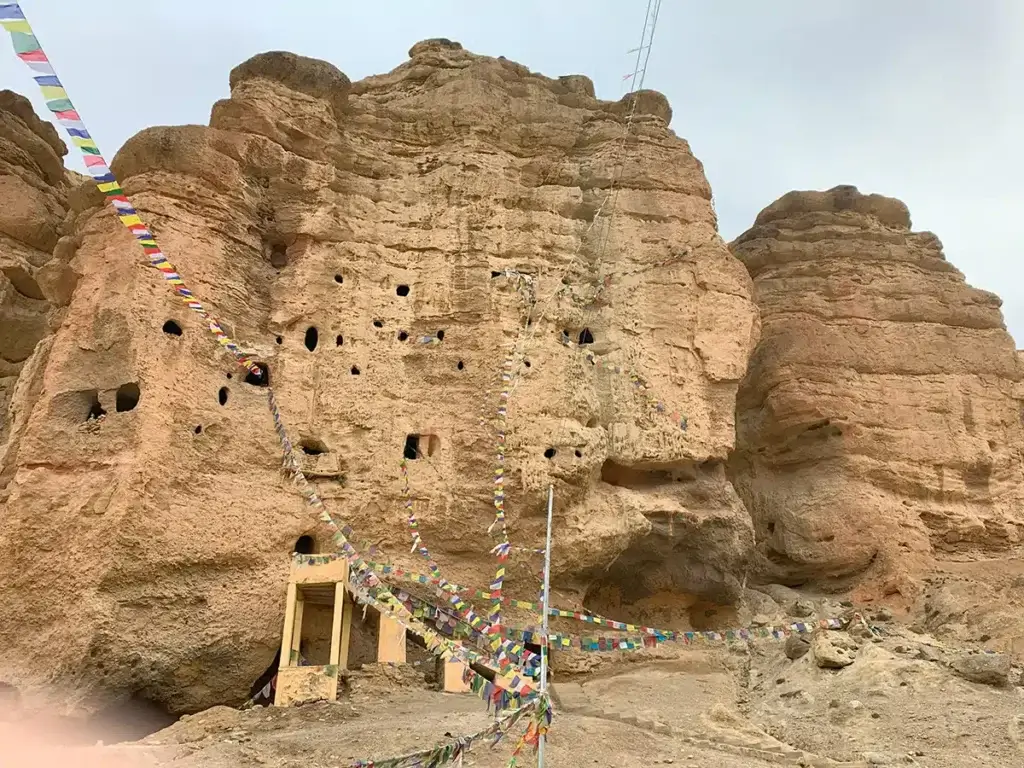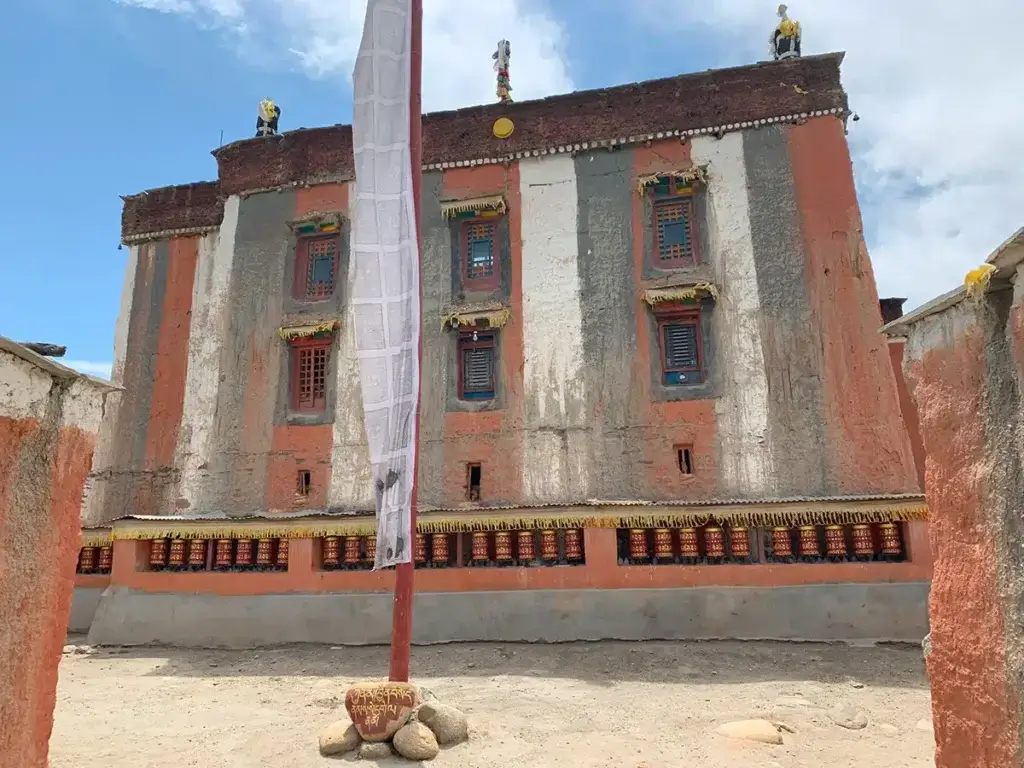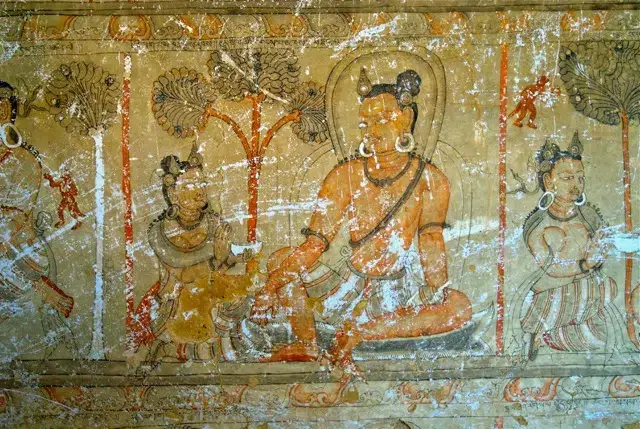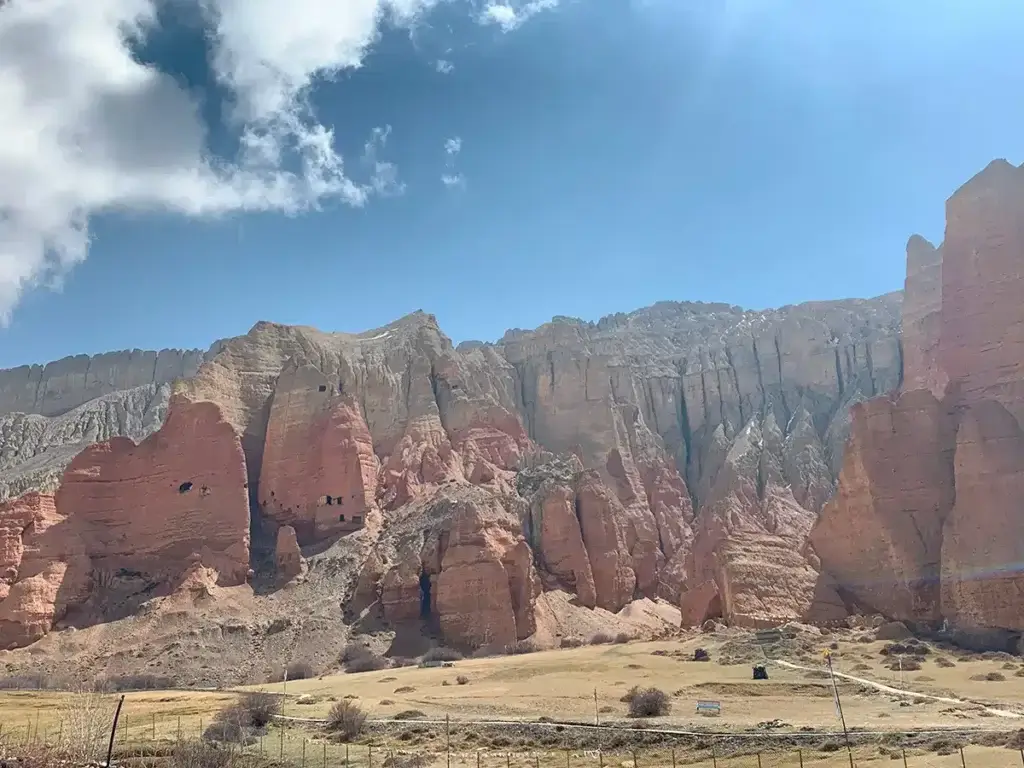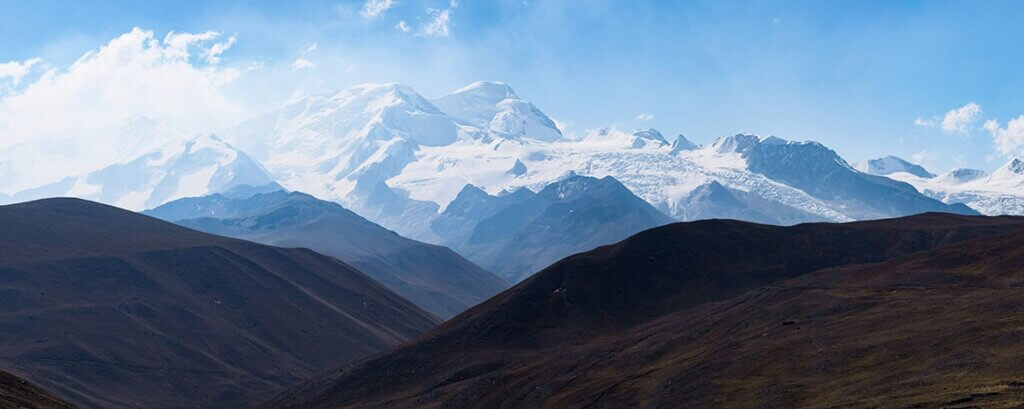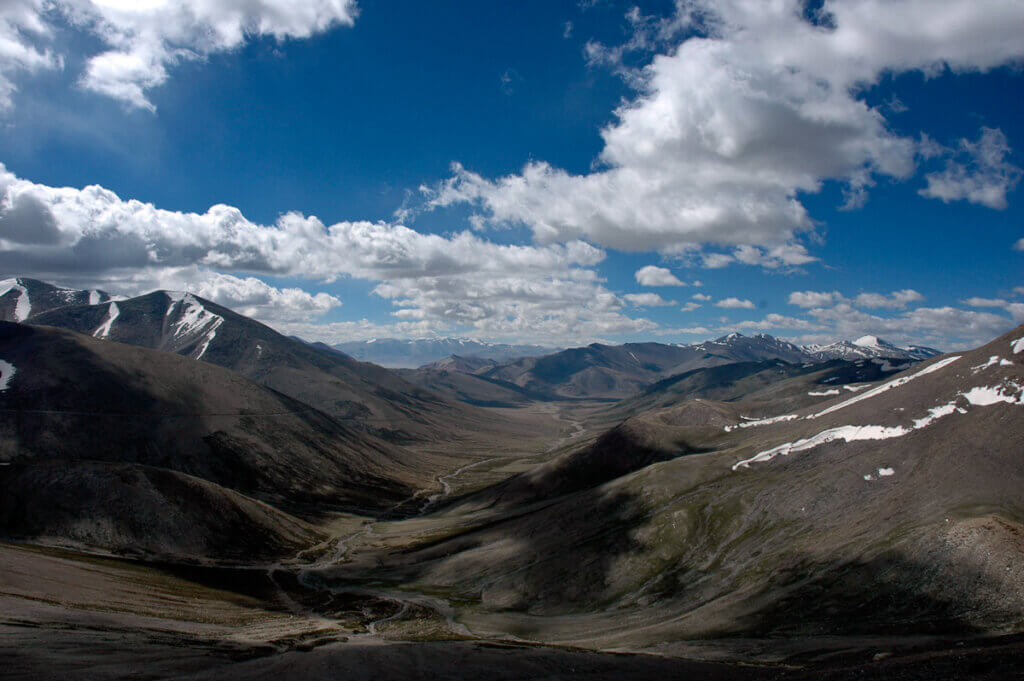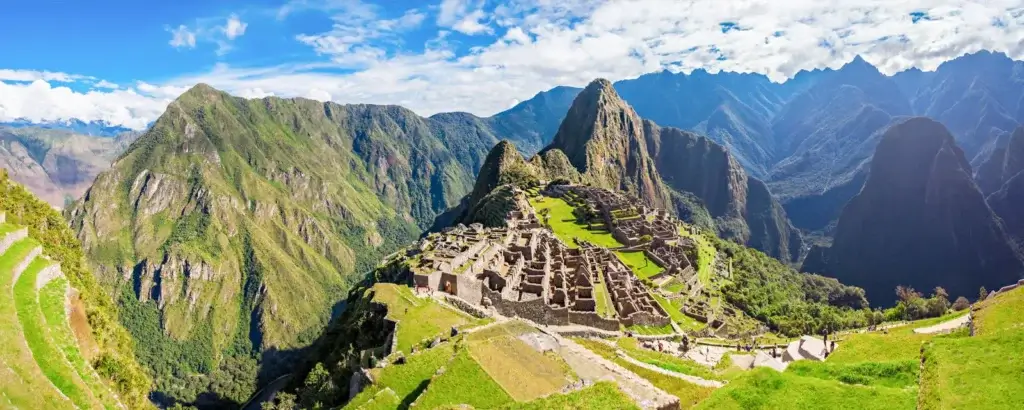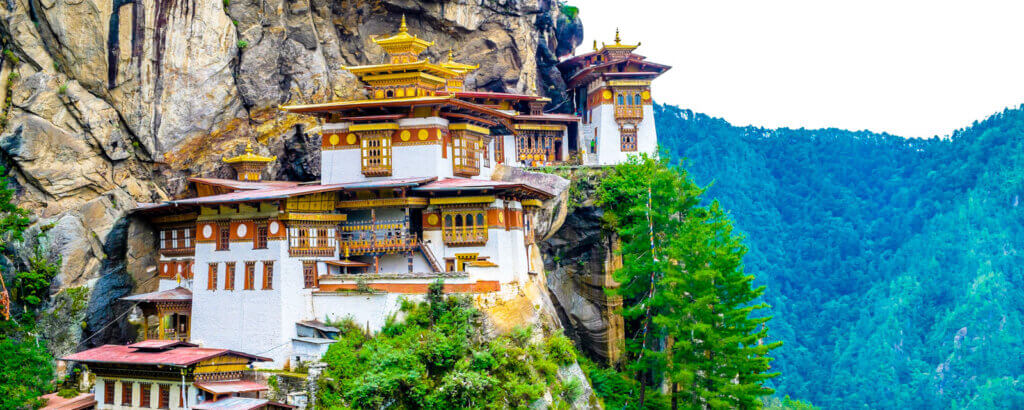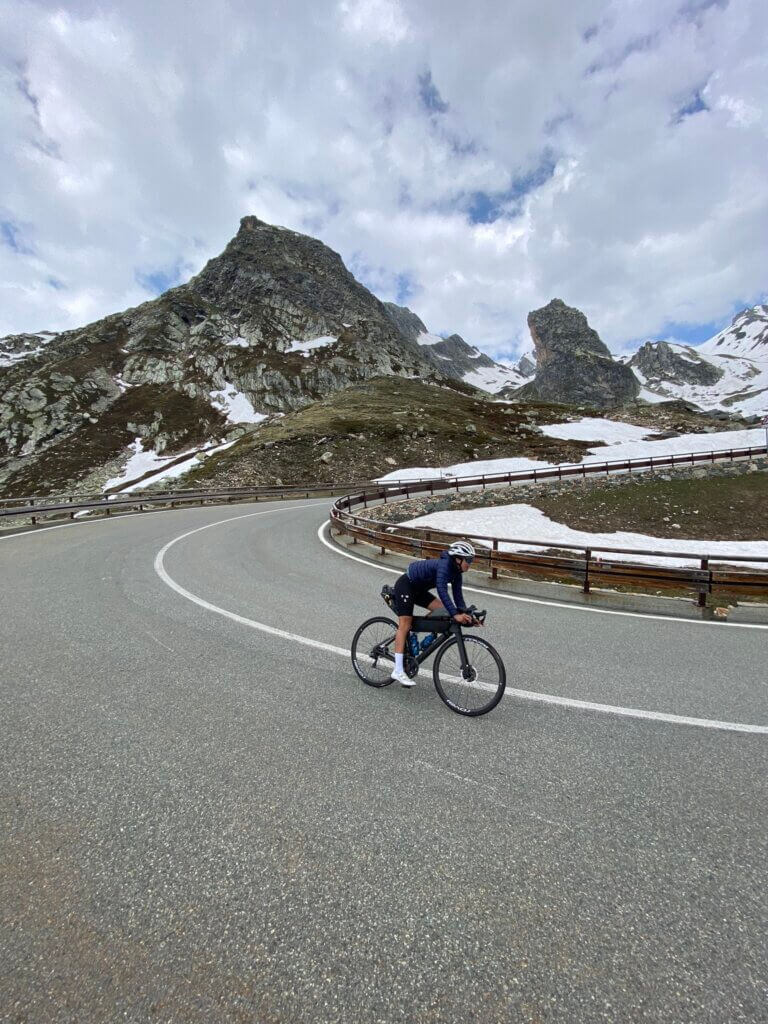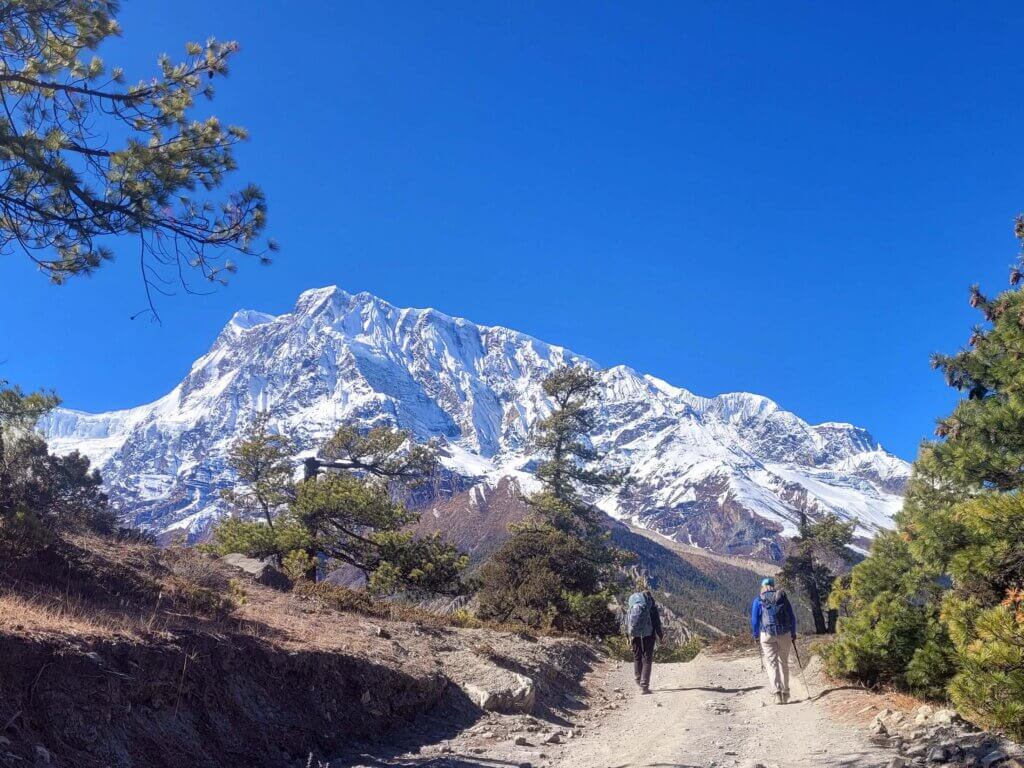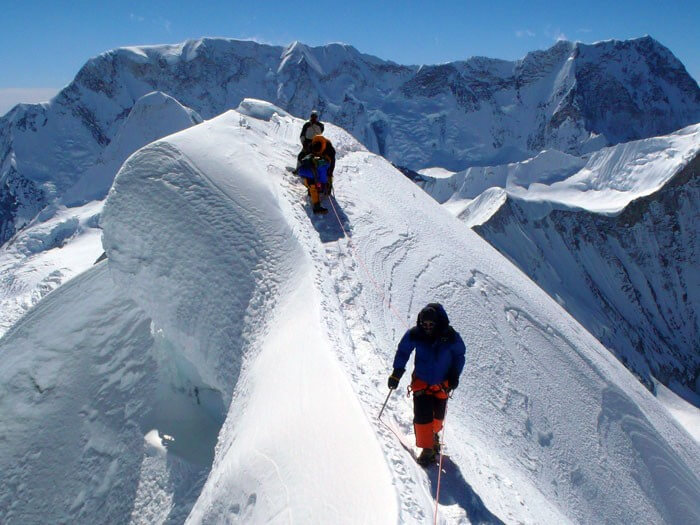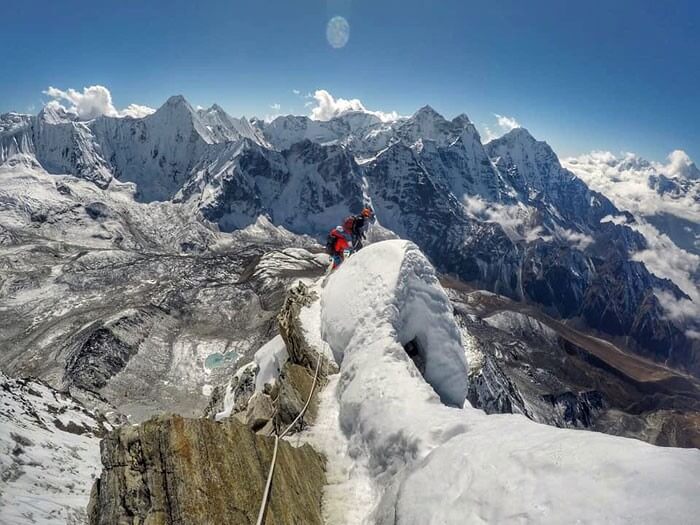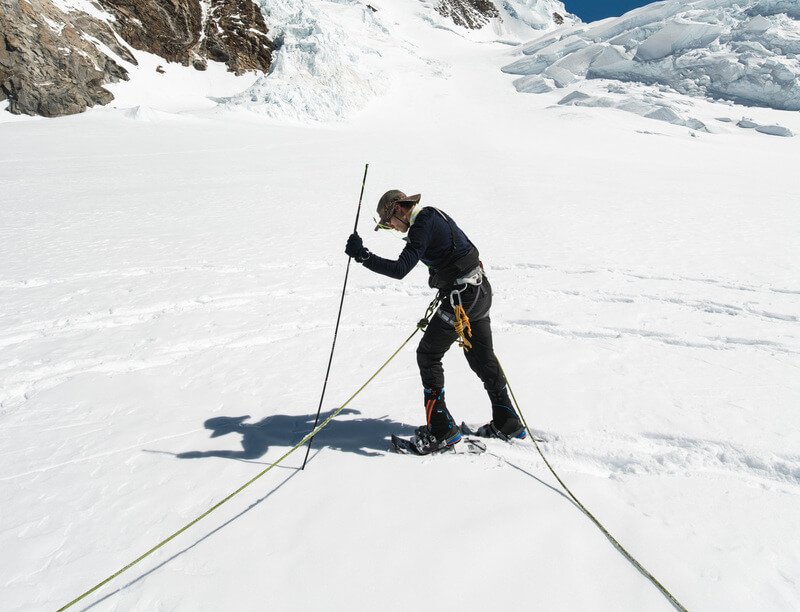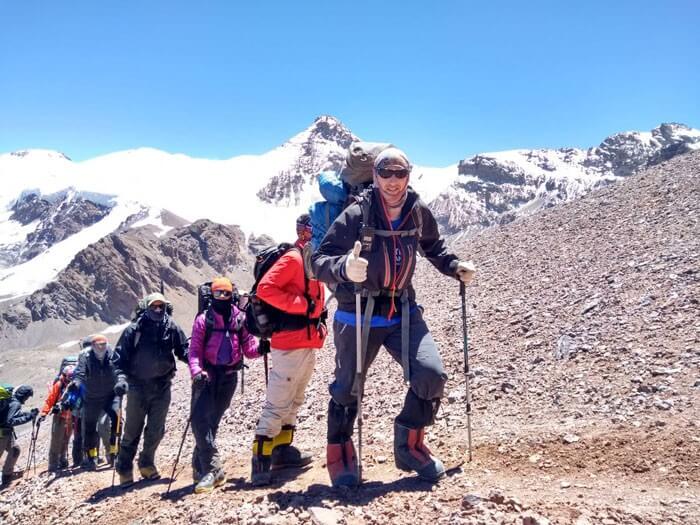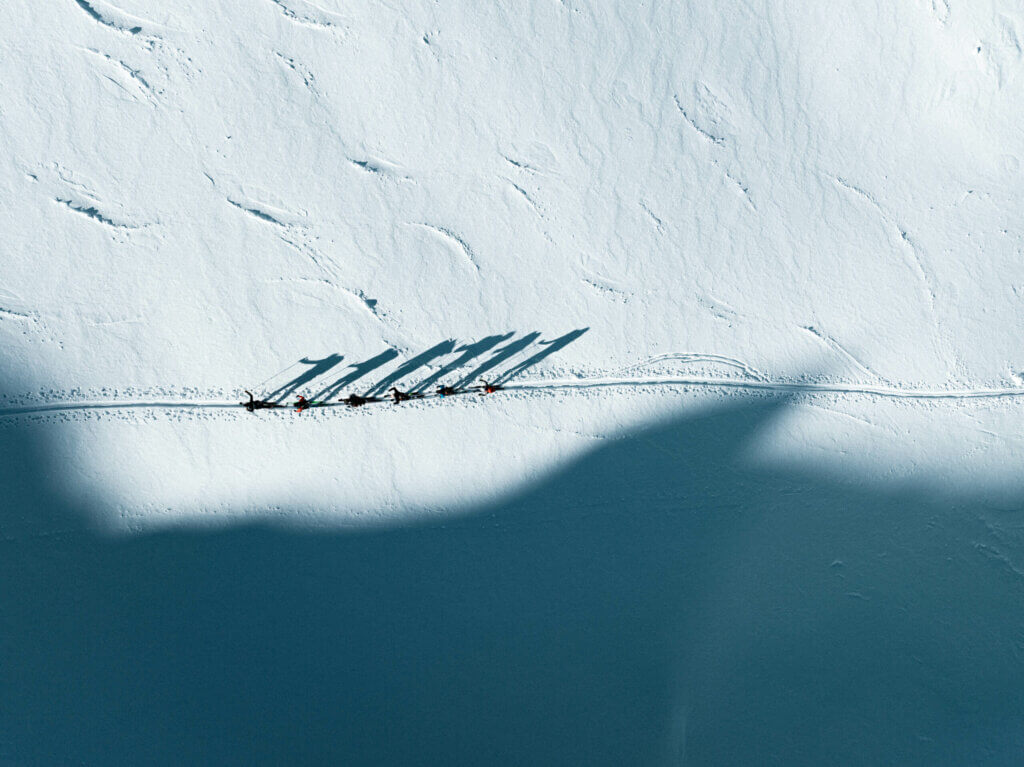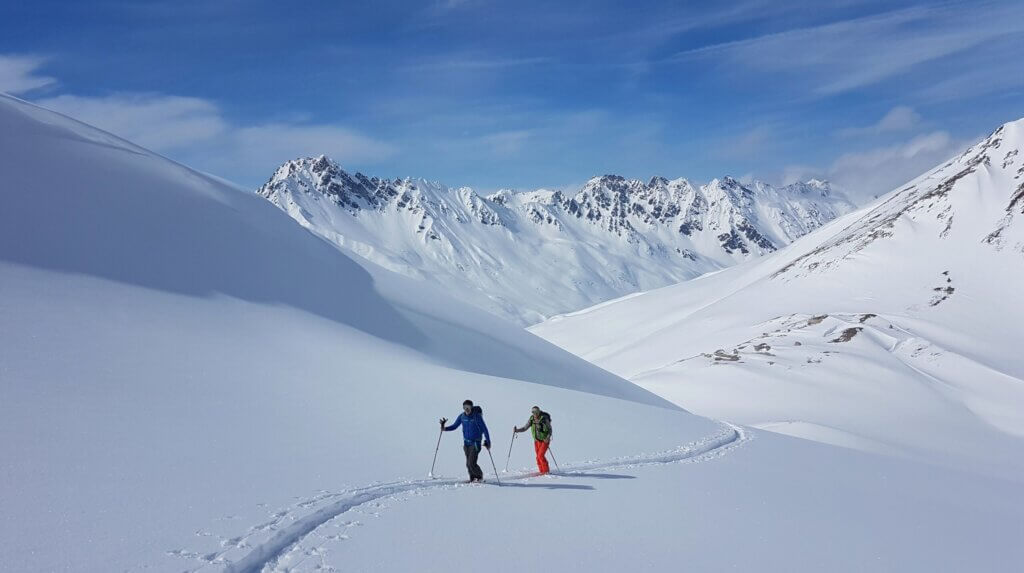General overview
The landscape of Mustang is like no other – a high-altitude desert with towering sandstone cliffs sculpted into pillars and organ pipes, thousands of natural and man-made caves and deep canyons and ravines. Our jeep tour will take you into the heart of Mustang with opportunities to take short hikes and explore the villages of this fabled land.
On our trip, we will explore centuries-old monasteries where, we will take in paintings and statues of Buddhist and pre-Buddhist “Bonpo” themes and figures. During the day we walk through ancient villages, view ancient fortresses and palaces and learn about the local people, their customs and daily life. There will be plenty of time to stop and photograph the stunning and unique terrain.
Although the hikes are not long, they do involve some effort, as we will be at high altitude. We can expect some of the trails to be rocky and uneven. Some of the caves that we will visit will have ladders to access the upper stories. Join us in sharing this fantastic opportunity to travel through jaw-dropping landscape in a remote part of Nepal that is steeped in traditional Tibetan Buddhist culture.
About Mustang
Mustang is a remote, high-altitude region in northwest Nepal, located close to the Tibetan border. Known to locals by its original name of the Kingdom of Lo, Mustang has a long, rich and complex history that makes it one of the most interesting and culturally significant places in Nepal. The early history of Lo is opaque and veiled in legend, myth, and mystery; there are records of events in Lo found in ancient Tibetan documents as early as the eighth century. Because Mustang has only been opened to tourism since 1992 (hence the nickname, “the Forbidden Kingdom”), its isolation has served to preserve and distill the Tibetan culture and heritage of the local people and their villages.
Itinerary
Note: If you are coming from the USA, and depending on your flight schedule, you will most likely need to leave the USA two days before the scheduled arrival date in Kathmandu to arrive on time. Depending on your flight schedule, you will likely arrive back in the USA on the day after your flight leaves from Kathmandu.
Day 1: Arrival in Kathmandu (4,500 ft)
Arrive Kathmandu by noon. You’ll be picked up at the airport and checked into your hotel. Before our Welcome Dinner this evening, we will have an orientation briefing.
Day 2: Kathmandu Sightseeing and Gear Check
After breakfast, we’ll begin our exploration of Kathmandu. While modern by Nepalese standards, Kathmandu is a sacred city to Hindus and Buddhists. Our tour includes three World Heritage Sights — 3,000-year-old Swayambhu (monkey temple), the Hindu temple and cremation site Pashupati, and the great Stupa of Boudnath. Following our tour, we will complete a thorough gear check.
Day 3: Fly to Pokhara (2,700 ft)
This morning, we will be transferred to the airport for the scenic flight to Pokhara. After checking into our hotel, we have the rest of the day to explore this popular tourist hub and second largest city in Nepal. Pokhara is the gateway to the Annapurna region and is surrounded by natural beauty. Our hotel is close to the beautiful Phewa Lake and the bustling Lakeside district.
Day 4: Pokhara to Kalopani (8,200 ft)
After breakfast, we will pick up and start our drive North. If the weather is clear, we will make a stop at Sarangkot just outside of Pokhara for a stunning panoramic view of peaks in the Annapurna Range. Once back on the road, we will follow the Kali Gandaki river and travel through some small villages and lush forest. We will spend the night in Kalopani, which translates as “black water” in Nepali because it is near there that the river narrows and turns a darker color as it flows south.
Day 5: Kalopani to Kagbeni (9,199 ft)
Today we will continue our drive north towards Mustang through local villages, passing through and exploring the apple farming village of Marpha. Marpha is quaint village with typical Thakali architecture and is a favorite stop on the Annapurna trekking circuit. Taking a slight but worthwhile detour, our next stop will be a visit to the holy temple complex of Muktinath, which is not only a revered Hindu site but also very sacred to Buddhist pilgrims. It is one of the oldest temples in Nepal dedicated to the God Vishnu and the location is known by the Hindus a place of salvation. It is believed that taking showers at the 108 water taps and taking holy bath in the ponds there will wash off all of one’s sins. Leaving Muktinath, we will drive to Kagbeni, where we will spend the night. Kagbeni was once an important center of trade. The large gates at the entrances of the village and the low doorways and tunnel-like alleyways make for an interesting walk around town.
Day 6: Drive to Ghami Village (11,545 ft)
This morning, before leaving Kagbeni, we will spend some time exploring the Red Monastery, which dates from the early 15th century. Once we leave town, a short drive brings us to the village of Tetang. Tetang is a medieval village with narrow alleys and high-walled houses, many of which are uninhabited. We can take a walk around the town and visit the monastery, which is said to be one of the oldest in Mustang. A trail above town provides wonderful views of the dramatic sandstone cliffs and rock chimneys typical of the region. Continuing on from Tetang , we will make a stop at the Mentsi Lhakang shrine cave in Chuksang, which contains some Buddhist icons and ancient wall paintings. Access to the sanctuary is gained by climbing two rustic (but secure!) ladders. Our day ends in the village of Ghami, where we will check into our hotel and have time to visit the Ghami gompa (monastery), possibly meet some of the resident monks and explore the traditional village.
Day 7: Ghami to Lo-Manthang (12,500 ft)
Today is a spectacular day of landscape and Tibetan culture. We will pass through the small village of Dhakmar and have time to photograph the towering red sandstone cliffs and pillars there. From Dhakmar, we will continue to Lo Geckar (also called Ghar Gompa), which is believed to be the oldest monastery in Mustang (8th century). The monastery complex is large and beautifully situated. It’s surrounded by prayer wheels and chortens and is a perfect place to take some time to learn more about the Tibetan Buddhist culture and customs of the region. The day’s final destination is the spectacular walled capital city of Lo Manthang, where we will spend two nights. We will have time this afternoon to walk around and explore this extraordinary city. We will see the palace of the former king and, today or tomorrow, we will tour Lo’s important 15th century monasteries, which contain wall paintings [and frescoes], some of which have been restored with the help of the American Himalayan Foundation. We will also have an opportunity to visit the Choede Gompa, which is the only monastery school in Mustang. We’ll have some free time to browse through some of the painting studios and souvenir shops in town and/or soak up the scene at one of several coffee shops.
Day 8: Exploration around Lo Manthang
Today we will drive north of Lo Manthang toward the Tibetan border and visit the area around Chosar – we will explore several different sites, include the spectacular five-story Jhong “sky caves” (accessed by ladders), with more than 40 different chambers inside. We’ll continue to the monastery at Garphu and from there, we can hike to some isolated meditation caves high on a hill above the monastery. Other chortens, monasteries and shrine caves abound in this region.
Day 9: Lo Manthang to Tsarang (11,676 ft)
This morning we will really veer off the beaten path and make an excursion to Samdzong, a tiny, isolated village north of Lo Manthang. It’s of interest because a team of climbers and archeologists, working for over ten years in the region, discovered dozens of human skeletons and decorative and ritual objects in the caves above town (see the PBS/National Geographic film: Cave People of the Himalaya). Although these caves are not accessible to us, Samdzong is a beautiful out of the way place that sees very few visitors and it’s worth the trip if only to get a peek at the villagers’ traditional way of life. After Samdzong, we’ll pass back through Lo Manthang on our way down valley to the village of Tsarang, where we will spend the night. An imposing ancient fortress and monastery sit above the village and we can tour them both.
Day 10: Tsarang to Syangmochen (12,464 ft)
Today, we will head to the beautiful villages of Dhi, Ghara and Yara. We will see people farming in fertile Dhi and we can wander the narrow alleys of Yara, surrounded by sculpted sandstone cliffs hundreds of feet high. It’s not uncommon to see women gathered outside spinning yarn or weaving fabric for their traditional striped aprons. We’ll continue on to Luri Gompa and walk up to the cave shrine there, which is one of the most significant sights in Mustang. The huge chorten inside is nothing short of incredible. It’s worth the short hike up a steep trail to get inside. Afterwards, we’ll head farther down valley to Syangmochen, where, If the weather is clear, we can hike up to a viewpoint on a ridge that offers a spectacular panorama of the Annapurna Range.
Day 11: Syangmochen/Samar to Jomsom (8,921 ft)
This morning, a short drive will bring us to the trailhead for the Chungsi Rangchung Cave, dedicated to Guru Rinpoche, who is thought to have brought Buddhism to Tibet and Nepal. A beautiful walk down into a canyon takes us to the entrance of this cave, where several caretaker monks live in a peaceful setting. We will explore the cave, meet the monks and have time to enjoy the scenery before heading back to our vehicles.
After our hike, we’ll continue on our way and turn off the main road to get to the village of Lubra. Believed to have been established in the 12th century, Lubra is a small village of Bon[1] families who have largely maintained their traditional way of life. We can wander around the hilly village, check out the terraced crops being grown there and visit the Bon monastery and a government school. We’ll end our day by driving back to Jomsom for the night.
Day 12: Jomsom to Pokhara
This morning, we plan to fly back to Pokhara, where we can spend the remainder of the day enjoying free time in the Lakeside neighborhood with its restaurants, coffee shops, and souvenirs aplenty. The motivated among us can rent a boat for an excursion on Phewa lake. If flights are cancelled because of bad weather, we will drive back to Pokhara on this day.
Day 13: Fly to Kathmandu
After breakfast, we will be transferred to the airport for the flight back to Kathmandu. The rest of the day will be free to relax or get lost in the maze of shops and attractions of the Thamel district.
Day 14: Kathmandu
Free time to tour the city or just relax. We can assist you in planning your day. Options include excursions by foot or taxi to a local shopping district, or a visit to the temples and sites of Bhaktapur, Patan or Kathmandu Durbar Square.
Day 15: Fly Home
Good to know
While this is not one of the more demanding treks, being in good physical condition makes the trip more enjoyable. The training outline below is standard for getting physically prepared for mountain trekking.
Please review all training sections to get a full sense of what type of condition you need to be in for this trek. For those who have not specifically trained for trekking in the past, we recommend utilizing numerous resources to build your training plan.
Personal trainers that are familiar with trekking are highly recommended as they can create personal training plans utilizing both indoor and outdoor locations with long-range objectives and criteria. Trainers and training programs can help build a program based on your location, and recognize your access to health climbs and outdoor training.
PREPARATION FOR MUSTANG TREK
Our Mustang Trek requires cardiovascular endurance (via aerobic training), strength endurance (through strength conditioning), and hiking-specific training (via hiking with a pack). Being in strong physical shape is one of the most important aspects for success on a high altitude trek. During your training, you should be planning to progressively ramp up your speed, duration (time and mileage), and pack weight on weekly training hikes to give you hiking-specific conditioning that cannot be matched by any other sort of training.
CARDIOVASCULAR CONDITIONING
Suggested conditioning activities for our Mustang Trek include running, walking on an inclined treadmill, doing stair stepping or stepmill training, trail running, working on an elliptical machine, walking up and down hills, or participating in step aerobic classes. While biking, rowing and swimming are cardiovascular options for the off-season or earliest stages of your training, be sure as you get closer to your expedition that you include predominantly spinal-loading cardiovascular exercise such as any of the activities mentioned above.
When embarking on a cardiovascular training program for our Mustang Trek, be sure to include at least three to four sessions of 30 minutes of sustained activity at a moderate intensity, and build to four to six aerobic sessions of sustained effort for at least 45-60 minutes each. Be sure to include a 5-10 minute gentle warm-up before working at your target heart rate for the day (for most workouts, choose a level of exertion that allows you to connect a few words together in a phrase, but leaves you feeling comfortably tired at the end of the workout), and cool down with 5-10 minutes of appropriate stretching of the muscles you use most in your activity, including lower back, calves, hamstrings, hips and quadriceps.Training with free weights, bands, a backpack, body weight exercises, or gym machines will help you build overall strength, particularly in the core (lower back and abdominals), upper back, and legs. Developing strength in your upper back and shoulders will help you with such tasks as carrying a pack and using trekking poles effectively. The calves, hips, quads, hamstrings and glutes are all involved in ascending and descending trekking routes, and strength endurance is required in all areas of the legs and hips.
TREKKING CONDITIONING
Hike steep outdoor trails, gradually increasing your pack weight with each outing until you are at your target trekking pack weight. A reasonable goal would be to ascend 2,000 to 2,500 feet carrying an average pack of 15-20 pounds in a 2 hour period, or roughly 1,000 vertical feet in an hour. A good training option for pack weight is to carry water in gallon containers or collapsible jugs, so you can dump water at the top as needed, to lighten the load for the descent. In early season, you might include hikes that gain up to 1,500 elevation over 6-8 miles round trip and carry a light day pack; each hike try adding a few pounds until you are comfortable with a 20 pound pack, then begin increasing the total elevation gain, speed, and mileage. When you can gain 3,500 feet with a 20 pound pack, start decreasing rest breaks and drop the last 5 pounds of pack weight so that you can work on increasing speed.
